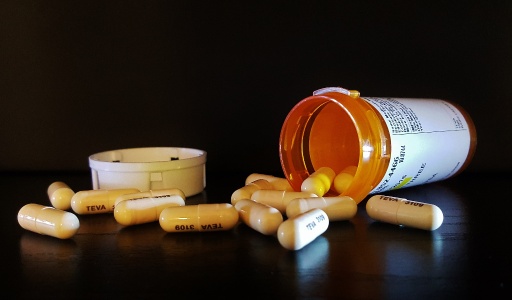Your Certified Path to Global Medical Markets.
Don’t risk patient safety or regulatory compliance. Your solution is a dual-certified translation partner.
The right partner understands the stakes. We provide the expertise and a quality management system that ensures accuracy and compliance.
We proactively identify and eliminate translation risks, safeguarding your products and patients.
Our process is fully auditable, providing the documentation and proof needed for your submissions.
We guarantee full traceability, documenting every step from translation to final delivery.
The Ultimate Guide to ISO 17100 and ISO 13485 for Life Science Translation.
Abstract
Navigating the complex world of life science translation requires more than just linguistic skill. It demands an unwavering commitment to quality, regulatory compliance, and patient safety. For companies in the medical device, biotech, and pharmaceutical sectors, this means choosing a translation partner who adheres to the industry’s highest standards. This article deconstructs the two most critical certifications—ISO 17100 for translation and ISO 13485 translation services. We’ll explain the crucial differences between these two standards, why one isn’t enough for regulated materials, and how combining both offers the certified life science translation quality that safeguards your product, your business, and, most importantly, human lives. We will explore the quality standards for medical translation, and explain why a dual-certified provider is the gold standard for success in a regulated market.
Introduction: The Stakes of Getting It Wrong
Imagine this scenario: A patient with a newly implanted medical device receives a user manual, translated into their native language. Unbeknownst to them, a seemingly minor translation error has muddled the instructions for a critical maintenance step. The patient misunderstands the procedure, leading to device malfunction and a serious health risk.
Or consider a different, but equally high-stakes situation: A medical device company is preparing its latest product for launch in a new international market. The submission documents, including clinical trial data and device labeling, are perfectly translated and ready for review by a regulatory body like the FDA or EMA. But what the company doesn’t realize is that the translation vendor, while providing linguistically flawless content, did not follow the strict quality management protocols required for such a submission. The application is rejected, not for a linguistic error, but for a lack of traceability and procedural rigor. The company faces significant delays, costing them millions and delaying access to a potentially life-saving product.
In the life sciences, translation is never just about converting words from one language to another. It’s about precision, accuracy, and, ultimately, patient safety. A mistranslated dosage, a misinterpreted warning label, or a flawed clinical report can have catastrophic consequences. This is why quality standards for medical translation are not just a nice-to-have; they are a non-negotiable requirement. While many businesses seek out professional translation services based on general promises of quality, the stakes in the life sciences demand more. You need a guarantee, a benchmark, and a system you can trust.
This is where ISO certifications come in. They are your shortcut to identifying a partner who understands the high stakes of the industry. The two most prominent certifications you’ll encounter are ISO 17100 for translation and ISO 13485 translation services. At first glance, they might seem similar, but they protect you from very different kinds of risks. The critical question isn’t which one is better, but rather, «Which combination protects your product, your patients, and your path to market?»
Understanding ISO 17100: The Standard for Professional Translation Services.
At its core, ISO 17100 for translation is the international standard specifically designed to certify the processes of a translation service provider. Think of it as the blueprint for high-quality linguistic work. This certification is globally recognized and represents a commitment to a specific, rigorous workflow that ensures linguistic and cultural accuracy.
What Does ISO 17100 Certify? The Blueprint for Linguistic Excellence.
The certification’s focus is on the people and the process. It’s designed to ensure that the translation itself is of the highest possible quality.
- Mandatory Human Translators: First and foremost, ISO 17100 mandates the use of qualified human translators. This means a translator isn’t just someone who happens to be bilingual; they must meet a specific set of criteria. This could be a recognized university degree in translation, a minimum number of years of professional experience, or a combination of both. This requirement is crucial, as it weeds out amateur linguists and ensures that a professional is handling your sensitive content.
- The Non-Negotiable TEP Process: The most significant component of ISO 17100 is the mandatory TEP process: Translate, Edit, and Proofread. This three-step workflow is the backbone of the standard.
- Translate: A qualified translator renders the source text into the target language. They ensure accuracy, maintain the tone, and respect cultural nuances.
- Edit: A second, equally qualified translator—known as an editor or reviser—compares the target text to the source. They check for consistency, accuracy, and completeness, often making significant improvements to the flow and style. This is a crucial step that distinguishes professional translation from basic output.
- Proofread: Finally, a third linguist performs a final review of the text in its intended layout. This person checks for any lingering typos, formatting errors, or visual glitches before the document is finalized. This step ensures that the final product is flawless and ready for publication or use.
- Robust Project Management: Beyond the linguistic process, ISO 17100 also requires a high standard of project management. This includes clear communication with the client, proper handling of project files, and maintaining records of the project.
In essence, an ISO 17100-certified provider guarantees that every project goes through this multi-layered, human-centric process. For a wide range of documents—marketing materials, websites, general business communications, or non-regulated user manuals—this standard is often sufficient. It ensures that your message is conveyed accurately and professionally.
The Limitations of the Linguistic Blueprint.
While ISO 17100 is a fantastic benchmark for linguistic quality, it has a crucial limitation. Its primary focus is on the translation process itself, not the larger regulatory environment in which that translation will be used. A perfect translation, by ISO 17100 standards, is linguistically flawless. But what if the source document changes? What if you need a documented audit trail of every change made? What if the translation needs to be validated for a specific, regulated purpose?
This is where ISO 17100’s scope ends, and another, more rigorous standard is required. What ISO certification is best for medical translation? For many high-stakes situations, the answer lies in a different standard that looks beyond the words and focuses on the entire system.
The Role of ISO 13485 in Life Science Translation Services.
Where ISO 17100 focuses on the how of translation, ISO 13485 translation services focus on the system that produces the translation. This certification is not specific to translation; it is the globally recognized quality management system for the medical device industry.
What Does ISO 13485 Certify? The Lifesaver for Regulatory Compliance.
When a translation provider is certified in ISO 13485, it means their entire operational system—from initial client contact to final project delivery and beyond—is built to meet the stringent requirements of medical device manufacturers. The focus is on risk management, traceability, and patient safety.
- Risk Management: This is the cornerstone of ISO 13485. The standard requires providers to proactively identify, evaluate, and mitigate risks associated with their services. In the context of translation, this could mean creating a risk assessment for every project. A provider would ask: What are the potential consequences of a translation error in this document? How can we prevent it? What is our contingency plan? This shifts the focus from merely doing the job right to ensuring that the process is inherently designed to prevent harm.
- Full Traceability: ISO 13485 demands complete and total traceability for every single document and process. This means a provider must be able to produce an audit trail that shows who worked on a project, when they worked on it, what changes were made, and who reviewed those changes. When regulatory bodies like the FDA or EMA come knocking, this documented history is critical for proving compliance and safety. This is a non-negotiable part of FDA translation requirements and other international regulatory submissions.
- Change Control: In the life sciences, source documents often change. A medical device manual might have a last-minute update, or clinical trial documents might be revised. ISO 13485 requires a strict change control procedure. This ensures that any update to the source document is meticulously managed, translated, and incorporated into the final material without error, and that all changes are documented.
- Validation: The standard requires proof that the translated material is fit for its intended purpose. This can include a process known as linguistic validation, where the translated text is tested with native speakers in the target audience to ensure it is clear, accurate, and easy to understand. This goes far beyond a simple proofread and is especially important for patient-facing materials and medical device labeling.
The Critical Difference: System vs. Process.
Herein lies the fundamental difference between ISO 17100 and ISO 13485. ISO 17100 is a standard for the translation process itself. It guarantees that the linguistic work is performed by qualified professionals following a multi-step linguistic process (TEP). It’s a gold standard for a single project’s linguistic quality. On the other hand, ISO 13485 is a standard for the entire quality management system (QMS) of a company. It guarantees that the organization as a whole is set up to produce and manage services in a way that minimizes risk and ensures regulatory compliance.
For instance, an ISO 17100-certified company can deliver a perfect, linguistically accurate translation of a medical device manual. But what if the source document is updated, and the client doesn’t notify the translation company? The ISO 17100 process has no specific built-in requirements to handle this change. An ISO 13485-certified company, however, would have a rigid change control procedure to manage this exact scenario. Their system would mandate a formal notification from the client, a documented update process, and a clear audit trail of the revised translation.
This distinction is crucial for understanding why a provider with both certifications offers a level of security that one with only a single certification cannot. One is a measure of linguistic quality; the other is a measure of systemic and regulatory quality. They are not competing standards; they are synergistic, and together they create an impenetrable safety net for your most critical documents. For a deeper dive, explore our life science translation pillar page
The stakes are high in life sciences.
Your translation can’t just be accurate; it must be compliant.
Don’t let a procedural gap or a minor error delay your product’s market entry. We ensure every detail is handled with precision and an auditable system.
ISO 17100 for Translation vs. ISO 13485 Translation Services: A Direct Comparison.
Choosing the right ISO certified translation company can feel overwhelming, but a clear comparison of these two standards reveals exactly what you’re getting from each. The table below provides a head-to-head view of the features, focus, and ideal applications of each certification.
| Feature | ISO 17100 (The Linguistic Blueprint) | ISO 13485 (The Regulatory Lifesaver) |
| Primary Focus | Translation Process Quality | Quality Management System (QMS) |
| Industry Scope | General Translation Services | Medical Devices, Life Sciences, Biotech |
| Key Requirement | The TEP process by qualified linguists | Risk Management, Full Traceability, Change Control |
| End-Goal | Linguistic & Cultural Accuracy | Regulatory Compliance & Patient Safety |
| Ideal For | Marketing materials, websites, non-regulated manuals | Clinical trial documents, IFUs, PMA submissions, device labeling |
| Example | Translating a company’s general press release | Translating a medical device’s Instructions for Use (IFU) for FDA submission |
The table above highlights the fundamental differences, but it’s crucial to remember that this isn’t an «either/or» choice when it comes to life science translation. It’s an «and.»
The Verdict: Why You Need Certified Life Science Translation.
For any project within the regulated life sciences, the answer to the question «Which certification do I need?» is not a choice between ISO 17100 and ISO 13485. The only correct answer is both.
Think of it this way: ISO 17100 for translation guarantees that the words on the page are perfect. ISO 13485 translation services guarantees that the entire process behind those words is perfect and built for a regulated environment.
- Provider A: ISO 17100 Only. This provider can deliver a translation that is linguistically accurate and culturally appropriate. The TEP process is a strong guarantee of quality. However, they may lack the robust, auditable system required for regulatory submissions. If the document is part of a larger, regulated product lifecycle, this provider could be an incredible risk. They may not have the necessary procedures for risk management, traceability, or change control. Your medical device translation could be a work of art linguistically, but it might not withstand a regulatory audit.
- Provider B: ISO 13485 Only. This provider has a phenomenal quality management system. They can handle traceability, risk, and change control with ease. However, since their certification isn’t specific to translation, you have no guarantee that they follow a rigorous linguistic process like TEP. While this is unlikely—as a good QMS would typically incorporate such a process—it’s not a mandatory part of the standard. This means you have a great system, but not an explicit guarantee of the linguistic excellence.
- Your Company’s Ideal Partner: Certified in Both. This is the gold standard for certified life science translation. A company with dual certification offers the best of both worlds. The ISO 17100 certification ensures that every translation is handled with linguistic precision, undergoing the TEP process with qualified linguists. The ISO 13485 certification ensures that this translation process is executed within a bulletproof quality management system designed for regulatory compliance and patient safety.
This dual-certification model provides unparalleled peace of mind. You are not just getting a translation; you are getting a service that is guaranteed to be linguistically accurate and supported by a system that ensures full compliance with global regulatory bodies. This synergy is what truly defines quality standards for medical translation and positions your project for success. This is the surest way to mitigate risk and guarantee a smooth path to market.
The Nuance of Life Science Translation Services.
Beyond the certifications, true expertise in life science translation services requires a deep understanding of the industry’s unique demands. It’s not just about the quality of the translation, but also about the context.
- Subject-Matter Experts: A certified provider will not just use any qualified translator. They will use linguists who are also subject-matter experts in areas like clinical research, biotechnology, pharmaceuticals, or medical devices. These professionals understand the complex terminology, scientific concepts, and regulatory nuances that a general translator might miss.
- Linguistic Validation: For patient-reported outcomes (PROs), surveys, and other clinical materials, linguistic validation is a crucial step. This process involves a forward-and-back translation, cognitive debriefing with target audience members, and a final review to ensure cultural and conceptual equivalence. It is a critical part of ensuring your data is reliable and valid across different languages. For more information, visit our Oris Translations life science translation services pillar page.
Your Checklist for Choosing a Partner.
In the highly regulated world of life sciences, choosing a translation partner is a critical decision. It’s not a commodity to be bought on price alone; it’s a strategic investment in quality and risk mitigation. Here is a simple, actionable checklist to guide your selection process:
- For any project, require ISO 17100 certification. This is your baseline guarantee of a professional, human-centric translation process. If a provider does not have this, their quality is not externally validated.
- For regulated materials, insist on a provider with ISO 13485 certification for their translation services. This is non-negotiable for documents that will be submitted to regulatory bodies like the FDA or EMA, or that relate to patient safety. This is how you ensure that the entire system behind the translation is secure and auditable.
- Ask for proof. Don’t just take a company’s word for it. Request their certificates of conformity for both ISO 17100 and ISO 13485. Ask them to explain how their quality management system (QMS) is applied specifically to translation projects. This is a critical step in choosing a certified life science translator.
- Inquire about specialization. Beyond the certifications, ask about their experience with specific project types, such as clinical trial translation or the translation of Instructions for Use (IFUs). For more information, please check our Oris Translations professional translation services pillar page.
ISO 13485 Requirements for Translation Services: Digging Deeper into the System.
To fully appreciate the value of an ISO 13485 translation services certification, we need to look beyond the surface level and understand what the standard mandates for a translation provider’s quality management system (QMS). It’s not just about having a certificate; it’s about embedding a culture of quality, safety, and compliance into every operational detail.
The Unrelenting Focus on Traceability and Audits.
In the world of medical devices, every single component, action, and decision must be traceable. This applies equally to translation. An ISO 13485-certified translation provider’s QMS will include strict protocols to ensure full traceability of all translation projects.
- Who Did What, and When? The system will meticulously log every step. This includes the date and time a project was received, who the project manager was, which specific linguists (translator, editor, proofreader) worked on the project, and when each stage was completed. This level of detail isn’t just for internal record-keeping; it’s a critical component of any regulatory audit. The ability to present a complete history of the document’s journey from source to final, translated version is non-negotiable for proving compliance.
- Version Control and Change Management: A primary source of risk in medical translation is the updated source document. An ISO 13485 QMS requires a documented process for managing these changes. For example, a new version of an Instructions for Use (IFU) document is released. The provider’s system would require the client to formally notify them of the change, a project manager would log the new version, and the changes would be isolated and translated in a controlled manner. This prevents the use of outdated content and ensures that the final translated version is always in sync with the current, approved source document. This level of rigor is essential for regulated medical translation.
Risk-Based Thinking as a Core Principle.
Unlike ISO 17100, which is process-oriented, ISO 13485 is founded on risk-based thinking. This means that a certified provider doesn’t just do a good job; they proactively think about what could go wrong and put systems in place to prevent it.
- Proactive Risk Assessment: Before any translation project begins, a risk assessment is conducted. For a clinical trial translation, this could involve identifying the most critical sections, such as dosage instructions or patient consent forms, and allocating additional resources or a more rigorous review process to those specific parts. The provider would analyze potential risks of misinterpretation and design a workflow to mitigate those risks.
- Supplier Control: A certified provider doesn’t just hire a translator and hope for the best. Their ISO 13485 QMS requires a rigorous vetting process for all external linguists. This involves verifying their qualifications, experience, and performance, as well as providing them with clear instructions and feedback. This ensures that every individual involved in the translation, whether an employee or an external partner, meets the same high standards of quality and expertise. For more information on this, visit our dedicated Oris Translations life science translation services page.

The difference is in the system.
ISO 17100 is the blueprint. ISO 13485 is the lifesaver.
One guarantees linguistic excellence. The other guarantees a quality management system that ensures risk mitigation, traceability, and patient safety.
FAQs: Answering Your Questions on Quality Standards.
What is the difference between ISO 17100 and ISO 13485?
ISO 17100 is a standard for the professional translation services process, focusing on the TEP (Translate, Edit, Proofread) workflow by qualified human linguists. It ensures linguistic and cultural accuracy. ISO 13485, on the other hand, is a quality management system for the medical device industry that applies to translation. It focuses on the overall system’s ability to manage risk, ensure traceability, and maintain regulatory compliance. In essence, one certifies the process of translation, while the other certifies the system that manages it in a high-stakes, regulated environment. The former is about linguistic quality, and the latter is about systemic and regulatory quality.
Why is ISO 13485 so important for medical device translation?
Medical device translation is a highly regulated field. The translations of Instructions for Use (IFUs), device labeling, and marketing materials are often part of a larger regulatory submission to bodies like the FDA or EMA. These agencies require proof that not only is the translation accurate, but that the process used to create it is controlled, auditable, and risk-managed. An ISO 13485 QMS provides exactly that. It’s the framework that ensures your translated documents will withstand a regulatory audit and that any changes or updates are handled in a safe, controlled manner, thereby protecting both your business and patient safety.
How does ISO 13485 apply to my project if it’s not a medical device?
While ISO 13485 originated in the medical device sector, its principles of risk management, traceability, and robust change control are invaluable for any life science translation services. The same level of rigor is beneficial for pharmaceutical companies translating clinical trial documents, for biotech firms translating research papers, or for any company where the accuracy of a translation is critical to patient safety or regulatory approval. The standards provide a robust, auditable system for managing any regulated content, regardless of the specific product type.
Do all ISO certified translation companies have the same quality?
Not at all. The ISO family of standards covers a wide range of industries and processes. For example, some companies may be certified only to ISO 9001, a general quality management standard. While this is a good starting point, it lacks the specific requirements of ISO 17100 (for translation) and ISO 13485 (for medical devices). Therefore, to ensure the highest level of translation quality standards for your specific project, it’s crucial to verify the exact certifications your potential partner holds and understand what each one guarantees.
What about other types of validation, like linguistic validation?
Linguistic validation is a specialized process, often used for patient-reported outcomes (PROs) and other clinical questionnaires, that goes beyond a standard translation. It is a methodical process to ensure that a translated questionnaire is not only linguistically accurate but also conceptually and culturally equivalent to the source, and that it can be understood by the target population. This process is a crucial part of clinical trial translation and is a key component of a robust quality management system as required by ISO 13485.
The Intricate World of Clinical Trial Translation and FDA Translation Requirements.
When it comes to clinical trial translation, the stakes are impossibly high. The accuracy of a translated patient consent form, a clinical protocol, or a Case Report Form (CRF) is not just a matter of good business; it’s a matter of patient safety, data integrity, and regulatory compliance. This is where the synergy of ISO 17100 and ISO 13485 truly shines. The linguistic rigor of ISO 17100 ensures the translation is scientifically and medically accurate, while the systemic controls of ISO 13485 ensure every single document is handled with the procedural precision required for regulatory submission.
Beyond Words: The Importance of Context in Regulatory Submissions.
Regulatory bodies like the FDA in the United States or the EMA in Europe have stringent FDA translation requirements that go far beyond a simple word-for-word translation. They require that the translated documents maintain the same meaning, context, and intent as the source. Furthermore, they often require a certificate of accuracy from the translation provider, which is a formal declaration that the translation is a complete and accurate representation of the original. A provider with a robust ISO 13485 QMS can produce this certificate as a matter of standard procedure, backed by a fully auditable trail of the entire translation process.
- Linguistic Validation in Practice: Consider a Patient-Reported Outcome (PRO) questionnaire used in a clinical trial. This questionnaire asks patients to rate their symptoms or quality of life. A simple, direct translation might use phrasing that is culturally inappropriate or that doesn’t quite capture the intended meaning. Linguistic validation is a specialized, multi-step process designed to prevent this. The process involves:
- Forward Translation: A team of linguists translates the questionnaire from the source language to the target.
- Back Translation: A different team of translators, who are blind to the original source, translates the target version back into the source language. This helps identify any ambiguities or misinterpretations.
- Harmonization: The project manager and linguists review both the forward and back translations to resolve any discrepancies.
- Cognitive Debriefing: The most crucial step. A small group of patients from the target population is asked to complete the questionnaire and then explain their understanding of each item. This step reveals whether the questions are clear and whether the answers are being interpreted as intended.
- Finalization: The questionnaire is finalized based on the feedback from the cognitive debriefing.
This level of rigor is a direct reflection of the risk-based thinking at the heart of ISO 13485. It’s not about just translating words; it’s about ensuring the integrity of the data collected in the clinical trial and, by extension, the safety and efficacy of the product being tested.
Quality Standards for Medical Translation: A Deeper Dive.
The term «quality standards for medical translation» can be nebulous. For a layperson, it might simply mean «no errors.» For a professional in the life sciences, it encompasses a far more complex set of criteria that includes not only linguistic accuracy but also regulatory compliance, traceability, and subject matter expertise.
The Role of Subject-Matter Experts.
A key component of true professional translation services in the life sciences is the use of subject-matter experts (SMEs). An ISO 17100-certified company requires qualified linguists. But for a medical translation project, «qualified» takes on an entirely new meaning.
- Clinical Knowledge is Crucial: A professional translator working on a clinical trial protocol must understand medical terminology, trial methodology, and the specific regulations governing the trial. For example, they need to know the difference between a «serious adverse event» and an «adverse event» in the context of a clinical trial, as misinterpreting this could have severe regulatory consequences.
- Medical Device Expertise: For medical device translation, the linguist must be familiar with the device’s function, its components, and the specific regulatory language related to its class (e.g., Class I, II, or III devices in the US). They need to understand what an Instructions for Use (IFU) document is and the critical role it plays in patient and user safety.
- Pharmaceutical Expertise: A translator working on a drug insert or a patient information leaflet must be knowledgeable about pharmacology, chemistry, and specific patient safety language required by different regulatory bodies.
A provider that is truly excellent in certified life science translation will have a pool of linguists who are not just native speakers but also have an educational background or extensive professional experience in a relevant scientific or medical field. This ensures that the translation is not only accurate but also conceptually sound. This is a practice that goes beyond the basic requirements of ISO 17100 and is often part of a robust ISO 13485 QMS.
The right choice is «and.»
You need a partner certified in both ISO 17100 and ISO 13485.
This dual certification model is the industry’s gold standard, ensuring linguistic precision within a robust, auditable system built for regulatory
success.
The Dangers of In-House and Uncertified Translations.
Some companies, in an effort to save time or money, may rely on an internal, bilingual employee or a generalist translation agency for their regulated medical translation needs. This is an extremely risky practice.
- Lack of the TEP Process: An internal employee may be bilingual, but they are almost certainly not a professional translator and are unlikely to follow a TEP process. The translation will not be reviewed by a second, independent professional, which significantly increases the risk of errors.
- No Traceability or Risk Management: An in-house translation has no documented audit trail. There is no record of who worked on it, what changes were made, or whether any risk mitigation strategies were employed. This is a red flag for any regulatory body and could lead to a swift rejection of a submission.
- No Subject-Matter Expertise: While a bilingual employee might be familiar with the company, they are unlikely to be a professional linguist and a medical subject-matter expert. This can lead to subtle but significant errors in terminology.
In contrast, using an ISO certified translation company that specializes in the life sciences provides a complete, risk-mitigated solution.
The Business Case for Dual Certification: Mitigating Risk, Securing Market Access.
At first, a small medical device company or a biotech startup might view the ISO 13485 requirements for translation services as an added cost or a logistical burden. They may be tempted to opt for a provider that is only ISO 17100 certified, or worse, one with no certification at all. This is a short-sighted and, ultimately, incredibly expensive mistake. The business case for partnering with a dual-certified provider is not just about quality; it’s about strategic risk mitigation and ensuring a smooth, predictable path to market.
The Financial and Reputational Costs of Non-Compliance.
The financial penalties for non-compliance with regulatory standards can be devastating. A rejected regulatory submission due to a flawed translation process can delay market access for months or even years. The costs associated with these delays include:
- Lost Revenue: Every day a product isn’t on the market is a day of lost sales. For a new medical device, this can amount to millions of dollars.
- Re-submission Costs: The process of re-submitting an application is not trivial. It requires additional time, resources, and often, new translations and documentation.
- Reputational Damage: A regulatory rejection or, in a worst-case scenario, a product recall due to a translation error, can severely damage a company’s reputation with investors, partners, and the public. In an industry where trust is paramount, this can be an irreversible blow.
Choosing a provider that can guarantee certified life science translation from a dual-certified system is a proactive investment that saves money and protects your brand in the long run.
The Power of Proactive Risk Management.
When you choose a partner that is certified in both ISO 17100 and ISO 13485, you are essentially outsourcing your translation risk to an expert. A dual-certified company has already identified and mitigated the most common risks associated with regulated medical translation, so you don’t have to. Their robust QMS ensures that:
- Risk is Proactively Managed: They have a clear process for assessing the risk of each project and implementing a plan to mitigate it.
- Traceability is Guaranteed: You will have a complete, auditable record of every step of the translation process, which is essential for regulatory submissions.
- Changes are Controlled: Any update to your source document will be handled in a systematic way that prevents errors and maintains consistency.
This level of control and expertise is simply not available from a provider that only holds one, or neither, of these certifications. It’s a key differentiator that ensures your path to market is as smooth as possible. Discover how a specialized partner can transform your global strategy on our life science translation pillar page.
Choosing a Certified Life Science Translator: Beyond the Basics.
So, you’ve decided to partner with a dual-certified company. What else should you look for? While the certifications are an excellent starting point, the best partners offer more than just a certificate.
The Human Element: Service and Expertise.
Even the most robust system needs a human touch. Look for a partner that offers:
- Dedicated Project Managers: A good translation company provides a dedicated project manager who is an expert in life science translation services. This person will act as your single point of contact, ensuring clear communication, efficient project flow, and that all your specific requirements are met.
- A Consultative Approach: The best partners don’t just take your order. They act as a consultant, asking questions about the intended use of the document, the target audience, and the regulatory environment. This consultative approach ensures that the final product is not only linguistically accurate but also fit for its intended purpose.
- Seamless Integration: Your translation partner should be able to seamlessly integrate with your existing processes. This includes working with your content management systems (CMS), your document control procedures, and your internal teams. For more information on our services and to see how we can seamlessly integrate with your processes, visit our Oris Translations professional translation services pillar page.
Systemic Quality for Compliance.

Proactive risk management is our core principle.
We don’t wait for problems to arise. Our ISO 13485 QMS requires a proactive approach to risk management, ensuring every project is handled with patient safety in mind.
: This includes full traceability, so you always have a complete audit trail of every document. Every change, every review, every step is documented and accounted for.


Your Regulatory Submission is Our Highest Priority.
We provide a bulletproof system that guarantees your translated documents will withstand the scrutiny of regulatory bodies worldwide, ensuring a smooth path to market.
The Power of Technology.
Modern certified life science translation relies on a blend of human expertise and cutting-edge technology. The right partner will leverage a suite of tools to enhance quality, speed, and consistency.
- Translation Memories (TMs): These databases store previously translated content, ensuring consistency in terminology and phrasing across all your documents. This is especially critical for regulated medical translation where consistent terminology is a non-negotiable requirement.
- Terminology Management: A good partner will create and maintain a glossary of your specific terminology. This ensures that terms like «biomarker,» «adverse event,» and «investigational drug» are translated consistently every time, regardless of the linguist working on the project.
- Machine Translation (MT): While machine translation has its limitations, it can be a valuable tool for certain types of content. A professional provider will use MT and then have it post-edited by a qualified human linguist, a process known as machine translation post-editing (MTPE). This allows for faster turnaround times while maintaining the high quality standards required by the life sciences. For more information, visit our Oris Translations professional translation services pillar page.
The Role of an ISO Certified Translation Company in Your Global Strategy.
For any company in the life sciences, expanding into new global markets is a key part of its growth strategy. However, each new market brings with it a complex web of regulatory requirements and linguistic challenges. Partnering with a specialized and ISO certified translation company is not a transactional decision; it’s a strategic partnership that enables your global expansion.
Enabling Faster Time-to-Market.
One of the biggest obstacles to global market access is the time it takes to prepare and submit all the necessary documentation. When you work with a dual-certified provider, you can significantly reduce this timeline. Their established QMS and rigorous processes mean there are no delays caused by rework, resubmissions, or a lack of proper documentation. The translation process is efficient, predictable, and fully compliant from the start.
For example, a medical device translation project that is handled by a provider with a robust ISO 13485 system will have all the necessary traceability and risk management built into the workflow from day one. When it comes time to submit the documents to a regulatory body, you have a complete, auditable package that is ready to go. This contrasts sharply with the delays and extra costs that come with using a non-certified or single-certified provider, where you might have to spend weeks or months creating the documentation for an audit after the fact.
Protecting Your Intellectual Property and Data.
In the life sciences, intellectual property (IP) is your most valuable asset. The documents you need translated often contain highly sensitive and proprietary information, from a new drug’s chemical formula to the technical specifications of a cutting-edge medical device. A truly professional and ISO certified translation company understands this and has stringent protocols in place to protect your data.
Their ISO 13485 QMS requires a high level of data security and confidentiality. This includes secure file transfer protocols, restricted access to project files, and signed non-disclosure agreements (NDAs) with all linguists and project managers. This provides an added layer of protection that a generalist translation agency might not offer, giving you peace of mind that your sensitive IP is safe.
Conclusion: Making the Right Choice.
Choosing a translation partner in the life sciences is one of the most critical decisions you will make. The wrong choice can lead to regulatory delays, financial losses, and, most importantly, can put patients at risk. The right choice, however, can be a strategic asset that streamlines your global expansion and strengthens your brand as a trusted provider of safe and effective products.
The key takeaway is this: for any project involving regulated materials—from clinical trial translation to medical device translation—you must insist on a partner that is certified in both ISO 17100 and ISO 13485.
- ISO 17100 provides the essential linguistic guarantee. It ensures that your documents are translated with the utmost precision and accuracy by a qualified human team following a proven TEP process.
- ISO 13485 provides the critical systemic guarantee. It ensures that the translation is created within a controlled, auditable, and risk-managed environment that meets the highest standards for regulatory compliance and patient safety.
When a provider is certified in both, they offer a synergistic model of excellence: a perfect translation delivered within a perfect system. This is the quality standards for medical translation that sets a provider apart as a true partner.
To ensure you make the right choice, use this final checklist:
- Verify the Certifications: Ask for proof of both ISO 17100 and ISO 13485 certifications.
- Evaluate Expertise: Inquire about their specific experience in your field and their use of subject-matter experts.
- Check for an Auditable QMS: Ask how they apply their QMS to translation projects, specifically regarding traceability and change control.
- Confirm their Consultative Approach: Choose a partner that understands the nuances of your project and acts as a strategic advisor.
By following this checklist, you can confidently select a translation partner that not only meets but exceeds industry standards. This ensures that your translated materials are not just words on a page but are integral parts of a larger system that protects your business and, by extension, the lives you aim to improve. See how our specialized services can meet your unique needs.
Your path to global markets.
We provide the expertise you need for a seamless regulatory journey.
Our specialized linguists and certified processes eliminate risk, streamline submissions, and get your life-saving products to market faster.
Have a question? We have answers.
Browse our frequently asked questions, or feel free to contact us directly to learn more about our services and how we can help.
Ready to Secure Your Global Market Access?
Don’t let compliance hurdles slow down your growth. Let’s start the conversation about your project and find the right solution for your unique needs.






